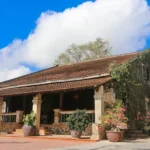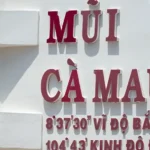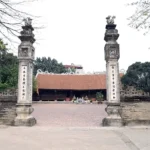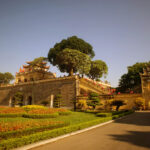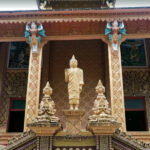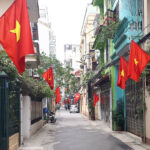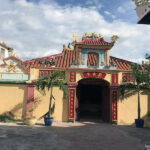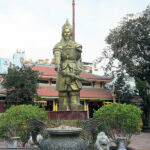Saigon, one of the old name of Ho Chi Minh City, is a simple and familiar name but a lot of Vietnamese people do not know the meaning of this city. The Town in a forest, The Land of Prosperous, The Tribute of the West… are the scholars’ interpretations of this city’s name over 300 years old. So let follow Vietdreamtravel and see which is the most appreciated explanations.
The Land of Prosperous
Scholar – writer Vuong Hong Sen said that it is impossible to rely on the semantics of the two words “Saigon” or “Prei Nokor” for analysis. According to his study, when the Chinese left Cu Lao Pho (Bien Hoa) in 1773, they gathered to the new land of Cho Lon today. They realize that this is a “Prosperous Land” and needs to be consolidated to be sustainable. The Chinese added a higher and stronger canal bank, and called this land “Tai-Ngon” or “Tin-Gan”, which according to Sino-Vietnamese was De Ngan.

Binh Tay Market – source: collected
De Ngan, pronounced with a Cantonese accent, sounds like “Thay Ngon” or “Thi Ngon”. And that was the sound to call Cho Lon at that time. According to this theory of Mr. Vuong, the sound “Saigon” is from “Master Ngon”, “Thi Ngon” that comes out.
However, according to Scholar Le Quy Don, there were data in 1674 when Governor Nguyen Duong Lam obeyed Lord Nguyen’s orders to attack Cambodia and break Saigon’s stronghold… This is also the first time the two words “Sai Gon” appears in Vietnamese documents. This proves that the word “Saigon” predates the arrival time of the Chinese in Cho Lon, so Vuong Hong Sen’s explanation is not convincing.
The Tribute of the West
The French scholar Louis Malleret said that Saigon is derived from the word “Tay Ngon” – meaning “tribute of the West”. The “Tay Ngon” is pronounced according to the Chinese accent is “Saigon”.
The reason Mr. Malleret followed this theory was based on historical data recorded by Trinh Hoai Duc. When Cambodia was divided into two states, both kings paid tribute to Lord Nguyen in Prei Nokor.

Ben Thanh Market (source: collected)
Regarding this explanation of the French scholar, Mr. Vuong Hong Sen said that “Tay Cong” was only used by the Chinese later. In the past, the Cho Lon area was called Saigon, but when the French occupied the Southeast provinces, they called the Ben Nghe area was Saigon because the name Ben Nghe was too difficult to read for them.
The town in the forest
Based on the word “Sai” means “firewood” and “Gon” means “cotton tree”, researcher Huynh Tinh Cua gave the meaning of Saigon as “firewood of cotton tree”.
Scholar Truong Vinh Ky said that the name Saigon was transliterated from “Prei Nokor” of the Khmer, means town in the forest. Gradually, people made mistake on reading, from “Prei” to “Rai” and then to “Sai” and the word “Nokor” read as “Kor” and then to “Gon”.

A giant cotton tree (source: collected)
The basis of this explanation is based on the fact that in the past Prei Nokor was a dense forest with many cottonwood trees used by local people for firewood. Scholar Truong Vinh Ky recounted that the ancient Khmer planted cotton trees around Cay Mai fort. He himself also saw some ancient trees there in 1885.
After Truong Vinh Ky, Governor Le Van Phat agreed with this explanation. He said that not only the Khmer but also the Lao people called this area “the forest of cotton trees” through the word Cai Ngon. However, this hypothesis is considered unfounded, because over time, no one has found traces of a “forest with many cotton trees” at Prei Nokor, but that is just speculation.
Origin and meaning of the name Saigon will still be a controversial, but many scholars have commented that the unknown fact makes Saigon more mysterious, attractive, and arouses curiosity when wanting to learn.
On July 2, 1976, upon the formal establishment of the modern-day Socialist Republic of Vietnam, the new government eventually renamed Saigon to Ho Chi Minh City following name of President. Ho Chi Minh, the former leader of Vietnam Communist Party. However, when remembering memories, people usually call this land area of Saigon City.






